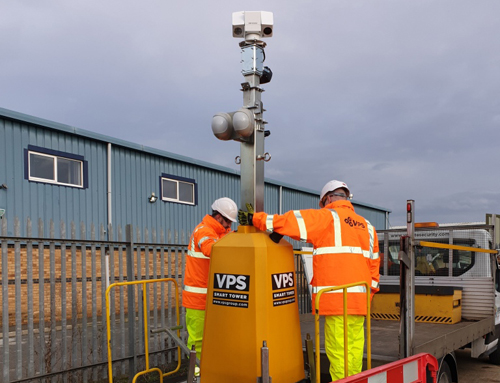Research from the national estate agent, Keller Williams UK, reveals the most expensive areas to buy a home across 18 major cities in England, and how much more they will cost you compared to the city wide average. House prices have been hitting historic highs across England, soaring by more than 13% in the last year alone. The nation’s cities, however, have not experienced the same price boom that rural, regional areas of the country have and many cities now have average house prices well below the national average. But all housing markets, urban or rural, have their expensive areas and Keller Williams has identified precisely where they are, thus showing exactly how much money homeowners will need to spend in order to live at the very top of their local market. For buyers, London is the most expensive city in England. The average house price is currently £510,299, a sum that dwarfs the national average and yet pales in comparison to the capital’s most expensive neighbourhoods. And none are more expensive than Knightsbridge and Belgravia where the average house price is a shade below £3 million: almost £2.5 million, or 478%, more than the London average. In Birmingham, the average house price is £208,241. The city’s most expensive ward is Sutton Four Oaks, located to the north-east of the city centre, where the average house price is £520,000. This makes Sutton Four Oaks 150% more expensive than the Birmingham average, a gulf that ranks second only to London. There is a 148% difference between Bradford’s average house price and that of its most expensive ward. The city average is £149,798, but in Ilkley, which is around 10 miles from the city centre, the average price is £372,500; a difference of £222,702. Oxford has a high average house price, but £451,385 is still less than half of what it costs to live in its most expensive ward: North Oxford. The North of the city has an average house price of £543,615, 120% north of the city average. In Newcastle, the average price is £172,770. In its most expensive ward, Gosforth, the average is 120% higher at £380,000. There is 111% difference between Bournemouth and its most expensive ward, Canford Cliffs: 105% between Sheffield and Dore and Totley: 95% between Cambridge and Newnham: 86% between Bristol and Westbury-on-Trym and Henleaze: 81% between Leeds and Harewood: 74% between Manchester and Chorlton: 72% between Nottingham and Wollaton West: 61% between Liverpool and Mossley Hill: 49% between Southampton and Shirley: 48% between Sunderland and Washington East: 45% between Portsmouth and Drayton and Farlington:33% between Leicester and Knighton: and 28% between Plymouth and Plymstock Dunstone. CEO of Keller Williams UK, Ben Taylor, commented: “The housing market has taken off and demand is pushing prices through the roof. Industry commentators keep predicting a sudden drop as demand lightens or at least evens out, but the truth is this is unlikely. The market will be as lively in a year’s time as it is now. But even if prices do drop slightly, these pinnacles of the UK property market will continue to command the highest house prices in their respective cities. The reason many of these wards are so expensive is that they offer rarified properties – large, spacious houses with good gardens; or tranquil, luxurious corners of otherwise frantic metropolitan areas. There will always be demand for these types of homes, as well as buyers with money to buy them. Especially when you factor in the foreign investor interest that our cities attract. If you’re lucky enough to be able to afford a step up into one of these wards, you can be sure that your financial stake will be well protected.” Table shows averate house price of English cities compared to that in their most expensive wards, ordered from largest price difference to smallest. City Average city house price Most expensive ward Average ward house price Difference £ – ward vs wider city average Difference % – ward vs wider city average London £510,299 Knightsbridge and Belgravia £2,950,000 £2,439,701 478.1% Birmingham £208,241 Sutton Four Oaks £520,000 £311,759 149.7% Bradford £149,798 Ilkley £372,500 £222,702 148.7% Oxford £451,385 North £995,000 £543,615 120.4% Newcastle £172,770 Gosforth £380,000 £207,230 119.9% Bournemouth £308,071 Canford Cliffs £650,000 £341,929 111.0% Sheffield £186,980 Dore and Totley £382,750 £195,770 104.7% Cambridge £473,534 Newnham £925,000 £451,466 95.3% Bristol £307,765 Westbury-on-Trym and Henleaze £571,250 £263,485 85.6% Leeds £212,943 Harewood £384,950 £172,007 80.8% Manchester £206,574 Chorlton £359,000 £152,426 73.8% Nottingham £166,153 Wollaton West £286,000 £119,847 72.1% Liverpool £163,580 Mossley Hill £262,750 £99,170 60.6% Southampton £218,192 Shirley £325,000 £106,808 49.0% Sunderland £133,359 Washington East £196,998 £63,638 47.7% Portsmouth £230,419 Drayton and Farlington £335,000 £104,581 45.4% Leicester £206,297 Knighton £275,000 £68,703 33.3% Plymouth £194,085 Plymstock Dunstone £249,000 £54,915 28.3% Sources UK House Price Index (HPI) ONS – Median house price by ward














